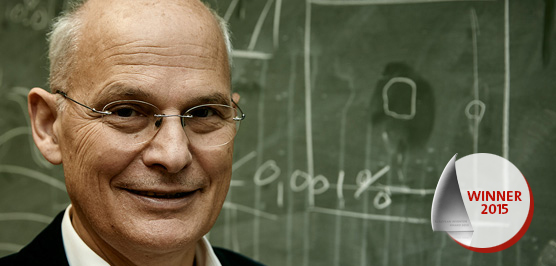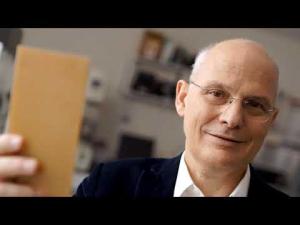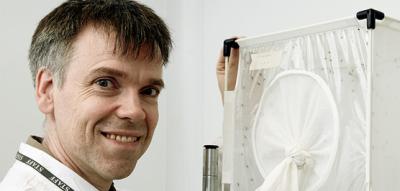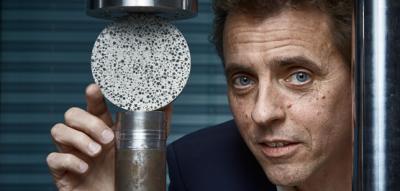Ludwik Leibler
Vitrimers – a new class of polymers
Winner of the European Inventor Award 2015 in the category research
With their ability to switch from a solid to a pliable consistency – achieved through changes in temperature – vitrimers unlock applications such as self-healing plastics that can repair themselves, with future applications reaching all the way into surgery and restorative medicine.
Leibler and his team, including colleagues François-Genes Tournilhac and Corinne Soulié-Ziakovic, achieved the breakthrough by combining the properties of two separate classes of materials into one “supramolecular” substance. Vitrimers consist of networks of molecules, the bonds between which are not rigid or permanent, but rather in a dynamic equilibrium: some bonds are breaking as other new intramolecular bonds are forming elsewhere. Consequently, vitrimers can be both rigid and immutable like so-called “thermosets” ̶ plastics that are cured into shape ̶ whilst also having glass-like properties such that they can be moulded or welded by heat.
Societal benefit
In the consumer products segment, vitrimers have the potential to reduce obsolescence of damaged plastic products by allowing for easy repairs. Some plastics require centuries to decompose, and currently 90% of all waste floating on the world’s oceans is plastic, killing as many as 1 million sea creatures annually. With vitrimers, self-repairing plastic could dramatically reduce waste and its environmental impact, as well as reducing replacement costs to consumers.
Medical applications for vitrimers include water-based nano gels with the ability to achieve “nanobridging” between biological tissues. In other words, the flexible molecular properties of vitrimers dynamically bind together the sides of open wounds, creating an “organ glue” for use in the operating theatre in situations unsuitable for stitches.
Economic benefit
Self-healing and thermo-reversible materials based on vitrimers have the potential to revolutionize entire industries, including the production of surfboards and aircraft components from epoxy. The global market for epoxies and hardeners reached € 6 billion in 2014 and is expected to grow at a compound annual growth rate (CAGR) of 6.3% to €8.24 billion until 2019.
Once set into a mould, conventional epoxy cannot be melted or dissolved. This rules out recycling, sending thousands of broken surf boards to landfills each year. Meanwhile, current production of new surfboards, estimated at 750,000 per year by SurfScience agency, creates around 220,000 tons of CO2. A “self-healing” surfboard from vitrimer-infused epoxy could reduce production volumes by extending the life cycle of existing equipment significantly.
How it works
In vitrimers, the number of active molecular bonds remains constant, while their organisation within a network changes freely. These changes in the molecular network can be thermally activated – for instance by applying heat – to encourage new bond-exchange reactions as needed. The result is that the material becomes malleable and can be welded like glass.
The inventor
An internationally renowned expert in the field of polymer materials and supramolecular chemistry, Leibler has filed 47 patents and published 169 scientific articles. Currently the Research Director at CNRS and member of the Academy of Sciences, he has invented a new class of “self-healing rubber” and consults on various projects for the application of vitrimers in science and medicine.
Did you know?
An anti-haemorrhaging, wound-healing aqueous solution - something for sci-fi movies? Now in the realm of possibility, thanks to Ludwik Leibler and his team's technology. Added to hydrogels in the form of nanoparticles, vitrimers enhance the bonding power between otherwise unattachable substances and surfaces.
In 2014, the team managed to repair two tissues in vivo, using an aqueous solution of nanoparticles. This technique could be particularly useful for organs that are hard to suture because they are likely to be torn by the needle.
Media gallery
Patent numbers:
Contact
European Inventor Award and Young Inventors Prize queries:
european-inventor@epo.org Subscribe to the European Inventor Award newsletterMedia-related queries:
Contact our Press team#InventorAward #YoungInventors





